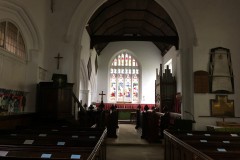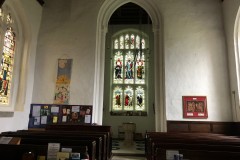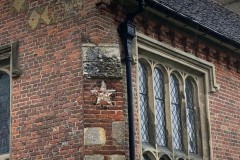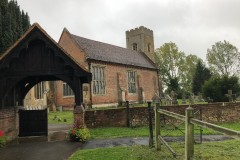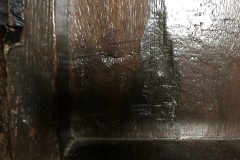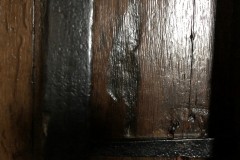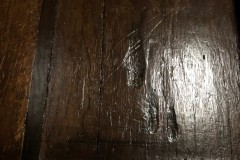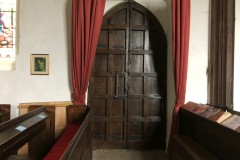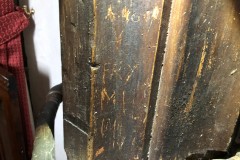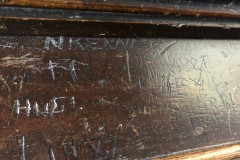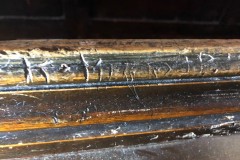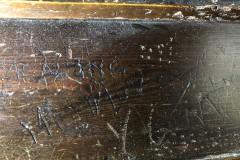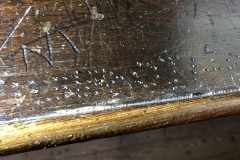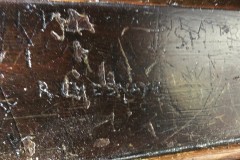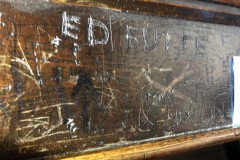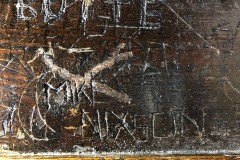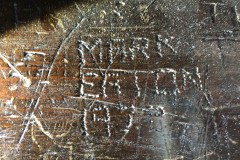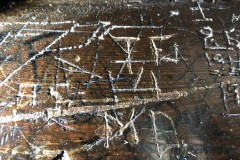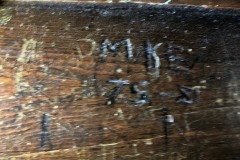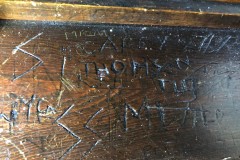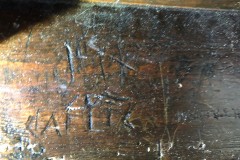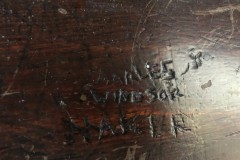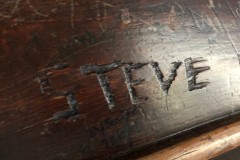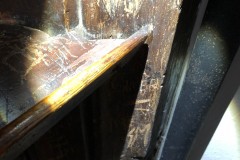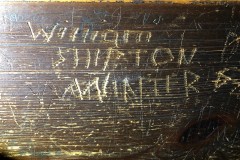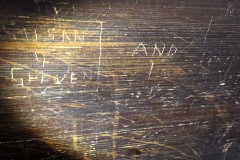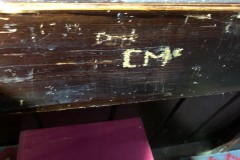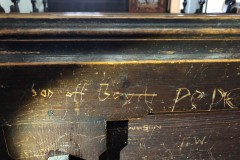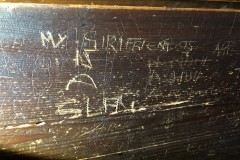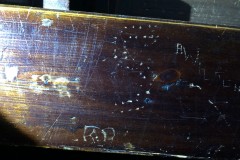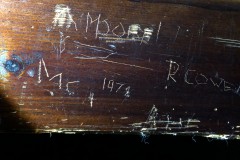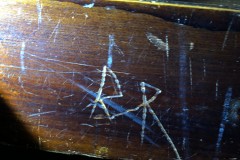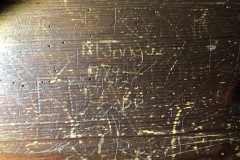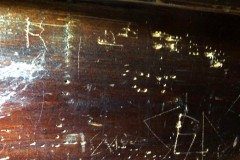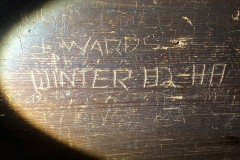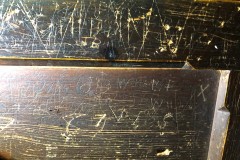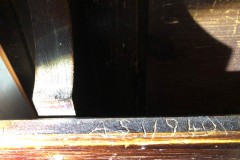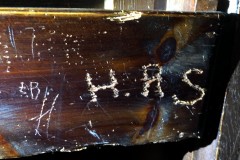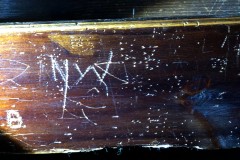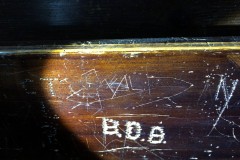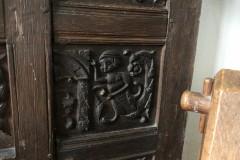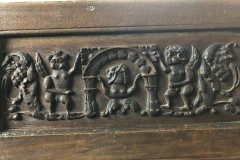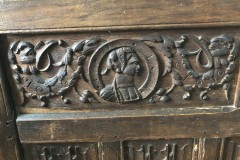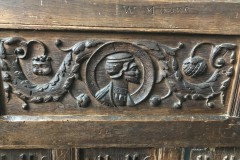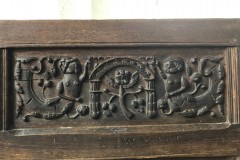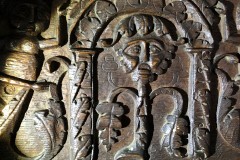St Catherine, Gosfield, Essex
The history of the church of St Catherine at Gosfield is tied in with the de Vere family, the Earls of Oxford. The first church was built by them in the 12th century. The current church belongs to the 15th century and the emblem of the de Vere’s, a star or mullet, is painted on the corner of the church that faces the de Vere family seat in Castle Hedingham.
There is little exposed stonework in the church so all the graffiti in the interior is on wood. The most significant marks aren’t graffiti at all – they are taper burn marks on the inside of the south door. These marks are deliberately made and are believed to have a protective function (John Dean & Nick Hill (2014) BURN MARKS ON BUILDINGS: ACCIDENTAL OR DELIBERATE?, Vernacular Architecture, 45:1, 1-15).
The graffiti in the church is made up of names and initials and is found in two main locations: the back pews and the choir stalls on the south side. Often pews at the back of the church were for the Sunday school members, and in St Catherine’s the south choir stalls are the ones nearest the bellows handle for the organ and the graffiti is thickest in that area.
What St Catherine’s lacks in stonework it makes up for in woodwork. The chancel has a series of carved panels dating back to the 1550s, according to Pevsner, with a series of wonderful creatures carved on them. These imagined figures are part human, part plant, part angel. If you like green men and other foliate heads, you will enjoy the foliate babies or cherubs that appear here. The panels are quite delightful and should be better known as rare survivals of (probably) domestic carving from the 16th century.
Report by Anthea Hawdon.
St Catherine’s
Church Road
Gosfield
Halstead
Essex
CO9 1UD
The church is usually open during daylight hours.
Search terms: N Kew, Hue, I Boot, RR, PE, IHXZ, Menling, M, A, YG, dot pattern, HL&R Chesnay, ED Butte, J, MK, Mike, Nixson, Butte, Carey Thomson, Tug, SS, MWT, Charles Windsor, Naker, VW JB, JD, WSS, X, A Moore, R Cowen, 1979, MC, 1949, 1970s, 1900s, 1940s, taper burns, burn marks, apotropaic marks, protective marks, medieval graffiti, historic graffiti


